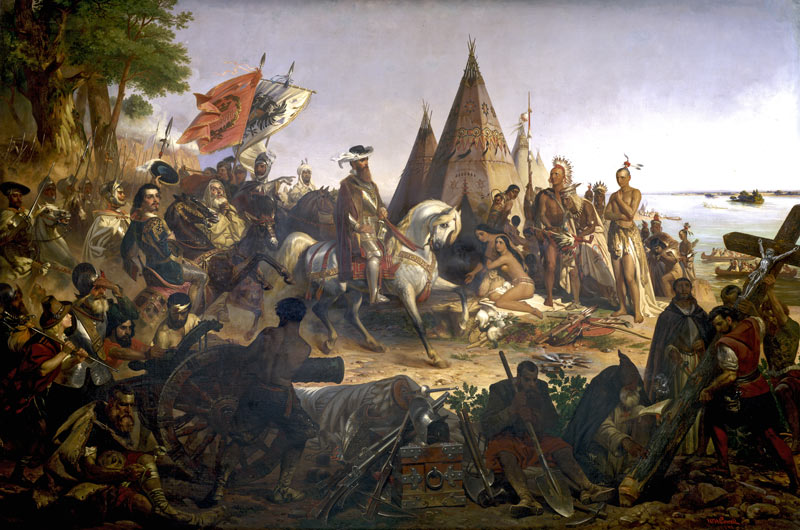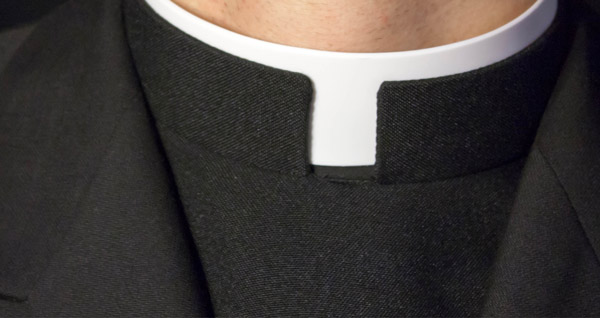
LITTLE ROCK, Ark.—The first Catholic liturgy is believed to have occurred in Arkansas 475 years ago, but archaeologists are working to authenticate physical proof of that celebration near the St. Francis River, about 40 miles from the Mississippi River.
The Parkin Archeological State Park in Cross County is home to what could be the physical evidence of a Catholic liturgy in the form of a cross, hidden in a mound until April 18. A team of archaeologists unearthed what is believed to be the base of the cross erected by Spanish explorers with Hernando de Soto’s expedition in 1541.
“The only thing we can really say is it’s the first recorded Christian ceremony held in the state of Arkansas. From the Catholic perspective especially, we know it was a Catholic Christian ceremony,” said Jeffrey Mitchem, Arkansas Archeological Survey’s research station archaeologist for Parkin.
The survey, part of the University of Arkansas system, studies and protects archaeological sites in the state.
Now that the wood has been excavated from the site about 30 miles northwest of Memphis, Tennessee, it’s a matter of authenticating it.

De Soto traveled around what eventually became Arkansas for a year before leading his men back to the Mississippi River in southeast Arkansas. In the three years after they landed in what is the southern United States, almost half of the crew had been killed. De Soto died from an unknown fever May 31, 1542, at Guachoya, what is believed to be Lake Village in Chicot County, according to the Encyclopedia of Arkansas History and Culture.
Four historical narratives — three of which were written by de Soto’s crew — speak of a cross erected July 5, 1541, (per the modern Gregorian calendar) on the largest mound where the Native American chief’s home was located. Artifacts, including a bead and some bells, are evidence the Europeans visited Parkin.
In 1965, archaeologists began surveying the Parkin area to determine if deposits on the site were enough to turn it into a state park. In 1966, wood was found and samples of the suspected cross were collected.
Mitchem discovered the samples in 1992 and sent them to a lab to be radiocarbon-dated, a process that is 95 percent accurate but only provides a range of dates. The lab dated the wood to the period from 1515 to 1663.
As other projects took priority, Mitchem waited, hoping one day he and others would be able to authenticate the cross and dig for more clues.
Last year, the Elfrieda Frank Foundation in New York awarded the team a grant of about $20,000 to excavate the mound. Mitchem and his specially selected crew “kept everything quiet” about starting the dig to ensure that outsiders would not disturb it.
About 3 feet down, the base of the cross was found burned, but the charred remains helped preserve it, while other pieces rotted away. Mitchem said it is unclear when the burn took place.
The team finished its work April 22, three days after reaching the cross. The excavators recovered “a little less than a foot in terms of height; the width, about a foot and a half; and maybe nine inches perpendicular,” Mitchem said.
The team planned to send several samples for radiocarbon dating, which can take a few weeks to a month, to see if the results match what was determined in the 1960s.
The encyclopedia recounts how de Soto, a Catholic, arrived with about 600 explorers in Florida in 1539, searching for gold and riches throughout the southeastern part of what is now the U.S., often acting ruthlessly toward Native Americans. When de Soto reached Arkansas on June 28, 1541, he was not attacked by the local Casqui tribe, the narratives said.
“You think about this — why did he do this here — because he didn’t do this everywhere,” Mitchem said of erecting the cross.
One historical narrative that included several interviews from de Soto’s crew is attributed to historical chronicler Garcilaso de la Vega and was written about 40 years after the expedition. Often cited, it stated that 2,000 people attended the Mass, cheering the cross. However, Mitchem said the account in that narrative “differs pretty drastically” from the others.
While there was a drought during that time, Native Americans wanted the cross erected to pray to God for rain, according to the narrative. It states they knelt and kissed the cross like the Spaniards.
“We just don’t know what the actual conversations were … We can say without a doubt the Casqui people were not converted to Christianity by this act,” Mitchem told the Arkansas Catholic, newspaper of the Diocese of Little Rock.
An Italian carpenter on the expedition ordered the men to chop down a tree that he could make into a cross. Once built, about 100 men helped stand the cross upright, though the exact height was unknown.
With a diameter of nearly 2 feet, Mitchem said, “it must have been quite a chore to do this to tell you the truth. It obviously was sturdy enough and did fine; there’s no evidence it fell over.”
The expedition had eight priests, including two Dominicans, a Franciscan and one member of the Order of the Most Holy Trinity, or Trinitarians. Only three of the religious survived the expedition.
“The Indians often would raise a post atop the chief’s mound that they would perform ceremonies around,” Mitchem said. “We can assume or infer anyway” that the cross was kept there after the service for use in other traditional ceremonies.
If the testing authenticates the cross as much as possible, Mitchem said, it’s a notable find for not only Arkansas but the archaeology world.
“It’s significant for local, state and national history really,” he said. “We really can say this is the first Christian ceremony in Arkansas and (those from) the de Soto expedition were the first Europeans to set foot in Arkansas, the first who met native Arkansans.”
Aprille Hanson | Catholic News Service
Top image: Discovery of the Mississippi: William H. Powell, 1853.
William H. Powell was the last artist to be commissioned by the Congress for a painting in the Rotunda. His dramatic and brilliantly colored canvas shows Spanish conqueror and explorer Hernando De Soto, riding a white horse, the first European to view the Mississippi River, in 1541. As De Soto and his troops approach, the Native Americans in front of their tepees watch, and a chief holds out a peace pipe. In the foreground is a jumble of weapons and soldiers, suggesting the attack they had suffered shortly before. To the right, a monk prays as a crucifix is set in the ground.


